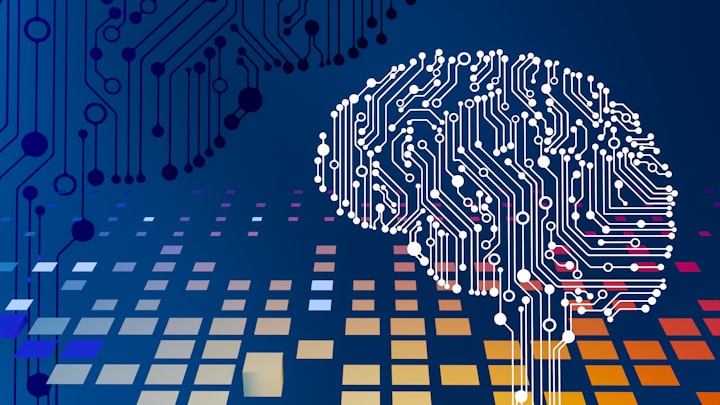Everything you need to know about AI (Artificial intelligence)
Read the blog post to understand how AI works.

Artificial intelligence (AI), in its broadest sense, is intelligence exhibited by machines, particularly computer systems. It is a field of research in computer science that develops and studies methods and software which enable machines to perceive their environment and uses learning and intelligence to take actions that maximize their chances of achieving defined goals.
Goals of AI
a)Reasoning and problem solving
Early researchers developed algorithms that imitated step-by-step reasoning that humans use when they solve puzzles or make logical deductions. By the late 1980s and 1990s, methods were developed for dealing with uncertain or incomplete information, employing concepts from probability and economics.
Many of these algorithms are insufficient for solving large reasoning problems because they experience a “combinatorial explosion”: they became exponentially slower as the problems grew larger.[18] Even humans rarely use the step-by-step deduction that early AI research could model. They solve most of their problems using fast, intuitive judgments. Accurate and efficient reasoning is an unsolved problem.
b)Knowledge representation
Knowledge representation and knowledge engineering allow AI programs to answer questions intelligently and make deductions about real-world facts. Formal knowledge representations are used in content-based indexing and retrieval, scene interpretation, clinical decision support, knowledge discovery, and other areas.
A knowledge base is a body of knowledge represented in a form that can be used by a program. An ontology is the set of objects, relations, concepts, and properties used by a particular domain of knowledge. Knowledge bases need to represent things such as: objects, properties, categories and relations between objects; situations, events, states and time; causes and effects; knowledge about knowledge; default reasoning; and many other aspects and domains of knowledge.
c)Planning and decision making
An “agent” is anything that perceives and takes actions in the world. A rational agent has goals or preferences and takes actions to make them happen. In automated planning, the agent has a specific goal. In automated decision making, the agent has preferences — there are some situations it would prefer to be in, and some situations it is trying to avoid.
The decision making agent assigns a number to each situation that measures how much the agent prefers it. For each possible action, it can calculate the “expected utility”: the utility of all possible outcomes of the action, weighted by the probability that the outcome will occur. It can then choose the action with the maximum expected utility.
Techniques
Search and optimization
AI can solve many problems by intelligently searching through many possible solutions. There are two very different kinds of search used in AI: state space search and local search.State space search
State space search searches through a tree of possible states to try to find a goal state. For example, planning algorithms search through trees of goals and subgoals, attempting to find a path to a target goal, a process called means-ends analysis.
Simple exhaustive searches are rarely sufficient for most real-world problems: the search space (the number of places to search) quickly grows to astronomical numbers. The result is a search that is too slow or never completes. “Heuristics” or “rules of thumb” can help to prioritize choices that are more likely to reach a goal.
Adversarial search is used for game-playing programs, such as chess or Go. It searches through a tree of possible moves and counter-moves, looking for a winning position.
Logic
Formal logic is used for reasoning and knowledge representation.[80] Formal logic comes in two main forms: propositional logic and predicate logic.
Deductive reasoning in logic is the process of proving a new statement from other statements that are given and assumed to be true. Proofs can be structured as proof trees, in which nodes are labelled by sentences, and children nodes are connected to parent nodes by inference rules.
Given a problem and a set of premises, problem-solving reduces to searching for a proof tree whose root node is labelled by a solution of the problem and whose leaf nodes are labelled by premises or axioms. In the case of Horn clauses, problem-solving search can be performed by reasoning forwards from the premises or backwards from the problem.
In the more general case of the clausal form of first-order logic, resolution is a single, axiom-free rule of inference, in which a problem is solved by proving a contradiction from premises that include the negation of the problem to be solved.
Inference in both Horn clause logic and first-order logic is undecidable, and therefore intractable. However, backward reasoning with Horn clauses, which underpins computation in the logic programming language Prolog, is Turing complete. Moreover, its efficiency is competitive with computation in other symbolic programming languages.
For the number #1 best AI tool you can Click Here to check.






Comments
There are no comments for this story
Be the first to respond and start the conversation.